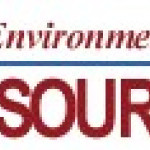- 行业: Government
- Number of terms: 3992
- Number of blossaries: 2
- Company Profile:
A group of compounds formed from the photochemical reactions of nitrogen and organic compounds. PANs are components of smog and known to cause eye irritation.
Industry:Pollution control
A gray-white metal that is soft, malleable, ductile, and resistant to corrosion. Sources of lead resulting in concentrations in the air include industrial sources and crustal weathering of soils followed by fugitive dust emissions. Health effects from exposure to lead include brain and kidney damage and learning disabilities. Lead is the only substance which is currently listed as both a criteria air pollutant and a toxic air contaminant.
Industry:Pollution control
A geographic area identified by the U. S. EPA and / or CARB as not meeting either NAAQS or CAAQS standards for a given pollutant. For more information, please view our designated areas website.
Industry:Pollution control
A generic term referring to a harmful chemical or group of chemicals in the air. Substances that are especially harmful to health, such as those considered under U. S. EPA's hazardous air pollutant program or California's AB 1807 and / or AB 2588 air toxics programs, are considered to be air toxics. Technically, any compound that is in the air and has the potential to produce adverse health effects is an air toxic. For more information, please visit our toxics website.
Industry:Pollution control
A general term pertaining to compounds of nitric oxide (NO), nitrogen dioxide (NO<sub>2</sub>) and other oxides of nitrogen. Nitrogen oxides are typically created during combustion processes, and are major contributors to smog formation and acid deposition. NO<sub>2</sub> is a criteria air pollutant, and may result in numerous adverse health effects.
Industry:Pollution control
A dosage of air pollution scientifically determined to protect against human health effects such as asthma, emphysema, and cancer.
Industry:Pollution control
A gas with a high vapor pressure used to force formulations out of aerosol spray cans. Among the gases used are butanes, propanes and nitrogen.
Industry:Pollution control
A federal law passed in 1970 and amended in 1974, 1977 and 1990 which forms the basis for the national air pollution control effort. Basic elements of the act include national ambient air quality standards for major air pollutants, mobile and stationary control measures, air toxics standards, acid rain control measures, and enforcement provisions. For more information, please go to the Federal Clean Air Act.
Industry:Pollution control
A form of air pollution consisting primarily of particulate matter (i.e., particles released by combustion). Other components of smoke include gaseous air pollutants such as hydrocarbons, oxides of nitrogen, and carbon monoxide. Sources of smoke may include fossil fuel combustion, agricultural burning, and other combustion processes.
Industry:Pollution control
A gas that does not react with the substances coming in contact with it.
Industry:Pollution control
